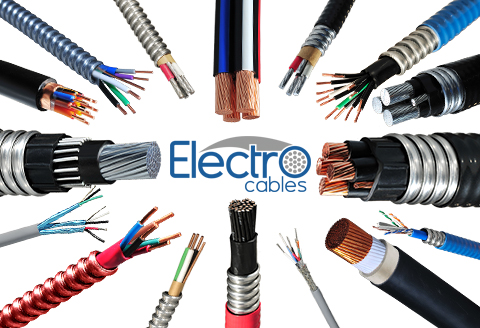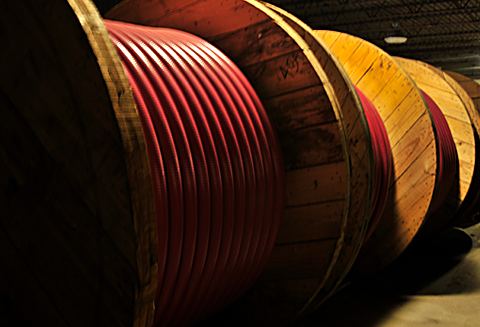A partner you can trust
The Ultimate Guide to Choosing the Right Electric Cable for Your Projects
In today's rapidly advancing technological landscape, the demand for high-quality electric cables has surged significantly. According to a report by ResearchAndMarkets, the global electric cable market is expected to reach USD 292.19 billion by 2027, growing at a CAGR of 5.6% from 2020. This growth is driven by increasing investments in infrastructure, renewable energy projects, and the rising need for energy-efficient solutions. Selecting the right electric cable for your projects is crucial, as it directly impacts safety, performance, and efficiency. With a wide variety of options available, understanding the specifications and applications of different types of electric cables can help ensure optimal results. In this ultimate guide, we will explore essential tips and key considerations that will simplify your decision-making process and enable you to make informed choices tailored to your specific needs.

Understanding Different Types of Electric Cables: A Comprehensive Overview
When embarking on a project that requires electric cables, understanding the various types available is crucial to ensuring safety and efficiency. Electric cables can be classified into several categories, including power cables, control cables, and communication cables. Power cables are primarily used to transmit electricity and can range from low voltage to high voltage applications, depending on the requirement of the project. Common types include single-core and multi-core cables, with the latter providing flexibility for complex configurations.
Control cables serve a different purpose, enabling the connection between control and monitoring systems within machinery and equipment. These are designed to carry low voltage signals and are typically shielded to prevent interference, ensuring that signals remain clear and intact. On the other hand, communication cables, such as coaxial and fiber optic cables, are essential for data transmission. Each type of cable has its own specifications and applications, making it essential to assess the project's needs carefully before making a choice. Knowing these distinctions will guide you in selecting the right cable to enhance performance and safety in your electrical projects.

Key Specifications to Consider When Selecting Electric Cables for Your Projects
When selecting electric cables for your projects, it's essential to consider key specifications that will ensure safety, efficiency, and reliability. One of the foremost factors is the cable's ampacity, or its ability to carry electrical current without overheating. Understanding the expected load in your circuits will help you choose a cable that prevents voltage drop and minimizes the risk of fire hazards. Additionally, the insulation type plays a crucial role; different materials offer varying levels of resistance to moisture, chemicals, and temperatures, all of which can impact the cable's performance in specific environments.
Another vital consideration is the cable construction, including the number of conductors and their arrangement. For instance, multi-conductor cables can simplify installations in complex setups, while single-conductor cables might be preferable for straightforward applications. Furthermore, the gauge of the wire must align with the project's demands; thicker wires (lower gauge numbers) can handle more current but may be less flexible. Ultimately, understanding these specifications will provide the foundation for selecting the right electric cable, ensuring that your projects run smoothly and safely.
The Ultimate Guide to Choosing the Right Electric Cable for Your Projects
| Specification | Description | Considerations |
|---|---|---|
| Wire Gauge (AWG) | Indicates the thickness of the wire. | Choose based on current load requirements. |
| Insulation Material | Material used for insulation, like PVC or XLPE. | Select based on environment and temperature ratings. |
| Voltage Rating | Maximum voltage the cable can handle. | Ensure the rating exceeds the application's voltage requirements. |
| Temperature Rating | Maximum operating temperature of the cable. | Consider ambient conditions where the cable will be used. |
| Length | Total length of the cable. | Measure distance requirements to reduce wastage. |
| Flexibility | Ability of the cable to bend without breaking. | Important for applications requiring movement or installation in tight spaces. |
The Importance of Voltage Rating and Amperage in Electric Cable Selection
When selecting the right electric cable for your projects, understanding voltage rating and amperage is crucial. The voltage rating indicates the maximum amount of electrical voltage the cable can handle without breaking down. According to the National Electrical Manufacturers Association (NEMA), cables with a rating of 600V are typically adequate for residential wiring, while industrial applications may require cables rated for 1000V or higher. Choosing a cable with the appropriate voltage rating ensures safety and prevents potential electrical hazards that can arise from over-voltage situations.

Amperage, on the other hand, represents the current flow the cable can safely carry. The American Wire Gauge (AWG) system provides guidelines on wire sizes corresponding to their amperage capacity. For instance, a 12 AWG copper wire is capable of carrying up to 20 amps, making it a common choice for household circuits. However, using a wire that cannot handle the necessary amperage can lead to overheating and fire risks. According to the National Fire Protection Association (NFPA), improper wire selection has been linked to nearly 22% of residential fires, underscoring the importance of careful consideration in selecting cables that match both the voltage requirements and the expected load currents of your specific projects.
Common Applications of Electric Cables and Their Specific Requirements
When selecting electric cables for various projects, understanding their common applications and specific requirements is crucial. The electric cable market is vast, with materials ranging from copper and aluminum to fiber optics and polymers, each serving different purposes. For instance, telecommunications often rely on fiber optic cables for high-speed data transmission, while building wiring typically utilizes copper or aluminum cables for safe and efficient electrical flow. The insulation type, such as PVC or XLPE, also plays a vital role in determining the cable's functionality and application, protecting the conductor from environmental factors.
The ongoing evolution in the electric cable industry highlights the significant demand across several sectors, including construction, automotive, and consumer electronics. As the largest producer and consumer of electric cables globally, the market in China reached approximately 1.2 trillion yuan last year. This immense market reflects the increasing necessity for innovative solutions to overcome challenges like market saturation, often referred to as "involution." As projects continue to diversify, it becomes imperative to choose the right cable tailored to specific needs, ensuring both performance and reliability in various applications.
The Ultimate Guide to Choosing the Right Electric Cable for Your Projects
This bar chart illustrates the common applications of electric cables along with their specific requirements in terms of current rating (Amperes) for each application.
Environmental Factors Affecting Electric Cable Performance and Longevity
When selecting electric cables for your projects, understanding the environmental factors that affect cable performance and longevity is crucial. Factors such as temperature, humidity, UV exposure, and chemical environments play a significant role in the lifespan and reliability of cables. According to a report by the National Electrical Manufacturers Association (NEMA), cables subjected to extreme temperatures can lose up to 50% of their durability, underscoring the importance of choosing cables that can withstand the specific conditions of your project.
Tip: Always check the temperature rating of your electric cable. For applications in harsh environments, consider cables made from materials like cross-linked polyethylene (XLPE) which offer better thermal stability.
Another critical factor to consider is moisture exposure. Cables that will be installed in damp locations should have proper insulation and protective coatings to prevent corrosion or short circuits. The Institute of Electrical and Electronics Engineers (IEEE) indicates that moisture can lead to insulation breakdown, significantly reducing cable life.
Tip: Opt for water-resistant cables with an IP rating suited for your environment, ensuring long-term reliability and safety in your projects.
Related Posts
-

10 Essential Tips for Sourcing Electric Cables Effectively in 2023
-

Innovative Uses of Electric Cable Wire in Modern Technology
-

5 Essential Tips for Choosing the Right Metal Clad Cable for Your Project
-

The Future of Underground Cable Conduit: Innovations Shaping Tomorrow's Infrastructure
-

7 Reasons Why Shielded Power Cables Enhance Electrical Safety and Efficiency
-

How to Choose the Best Flat Power Cable for Your Needs

Products
Products
LEARN MORE
Current Inventory
Current Inventory
LEARN MORE
Custom Solutions
Custom Solutions
WE CAN HELPLighting Power & Control-Signal Cable
This content is restricted to site members. If you are an existing user, please log in. New users may register … LEARN MORE “Lighting Power & Control-Signal Cable”
LOOKING
FOR HELP?
We are here to help. You can contact us or create an account online to have access to special products, technical specifications and our new online quote tool.
ELECTRO CABLES
9 Riverside Drive
P.O. Box 276
Trenton, Ontario
CANADA K8V 5R5
N.A. Toll Free: 888-ELECTRO
(1-888-353-2876)
World: 613-394-4896
Fax: 613-394-4101
Email: sale@machinecables.com
We manufacture cables that are certified by the Canadian Standards Association (CSA), listed by Underwriters Laboratories and/or listed by Intertek (ETL).
Our quality management system is registered to ISO 9001: 2015. Our team is dedicated to consistently providing quality service and products to our customers.

© 2025 ELECTRO CABLES • SITE BY SNAP 360•
